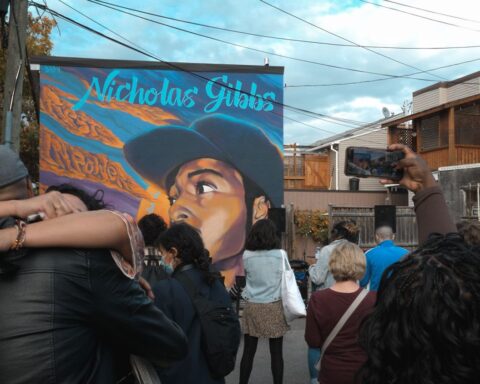Little India: Village of Dreams
(Canada, 58 min.)
Dir. Nina Beveridge
In 2016, the BBC podcast More or Less named Toronto the most diverse city in the world as a response to London Mayor Sadiq Khan’s giving the title to the city under his care. The BBC’s argument goes beyond the statistics of migration and foreign-born residents, of which Toronto has many, and considers its mixture of residents from around the world. When the BBC say so, it’s clear that TO is a “global city” of the first order.
Just commuting around Toronto gives a tour of the world as one visits Little Italy, Little Portugal, Koreatown, two Chinatowns, Little Tibet in Parkdale and Little Ethiopia on the Danforth just past the gyros and loukoumades of Greektown. (Opa!) The ethnic population that holds the largest share of Toronto’s diverse communities is the South Asian population at 12% according to the 2011 census referenced by the BBC. The booming city within a city for Toronto’s South Asian community is Little India. Situated on Gerrard Street East between Coxwell and Greenwood Avenues, Little India is a hub for South Asian spices that add to the complex and distinct flavour of Toronto.
The new documentary Little India: Village of Dreams by Nina Beveridge profiles this distinct strip of the city and its residents. The doc visits the bazaar of Gerrard Street at a time when Little India, along with many of the other distinct cultural hubs, faces gentrification, condo-fication, and the erosion of culture through name brand drug stores, juice bars, coffee shops, and cheap Western eats. Beveridge talks to multiple generations of “Little Indians” to illustrate the currents that endure and adapt as new generations find their place in the world.
Sumaiyah Shah, for example, shares her experience working in her mother’s henna shop and salon at an early age. She describes the fluctuations of in the business that inspired her to create an event business with her husband. While her work doesn’t see her managing the same salon as her mother, her trajectory continues the tradition of family business in the community.
Similarly, Gulshan Sayani describes how she came to manage Little India’s landmark eatery Lahore Tikka House when her late husband, Alnoor, died suddenly of a heart attack. She recalls taking control of the ship with concerns that the 400-seat restaurant might slip away from the family legacy. Sayani’s story is one of remarkable devotion and perseverance as she shares her experience in being a female manager in a community rooted in patriarchal tradition, gaining the trust and respect of her staff quickly while juggling her responsibilities as a working mother.
Other stories, like that of red-headed merchant Harleen Khorana and savvy entrepreneur Chandan Singh, show how family businesses with roots in shared cultures, languages, and experiences help new Canadians settle into the community they now call home. Little India: Village of Dreams depicts the various communities—Sri Lankan, Pakistani, etc.—that coexist within the vibrant bazaar. Nina Beveridge’s doc offers a valuable snapshot of Canada’s diverse communities within this microcosm that occupies just a few blocks of Toronto.
Little India: Village of Dreams premiered on TVO on July 1.











